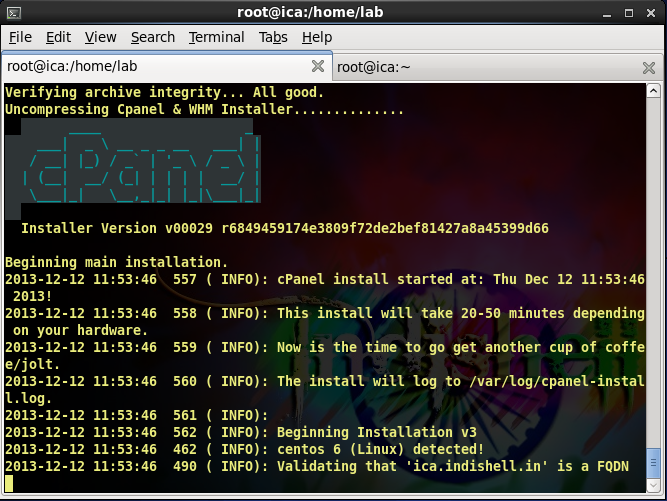

Necessary cookies are absolutely essential for the website to function properly. There we go, that’s all you need to do to get going. Now that you have CSF installed, run “Check Server Security” and action accordingly. Securing the server Install CSF firewallĪfter the setup of CSF, you need to edit the configuration and and activate CSF. I’d recommend updating MySQL before this, as that update will require EasyApache to run again. Set it all up as you require, and then run easyApache to remove, or add, or update any software you want. When accessed for the first time, you will be guided through the core options. To access the WHM interface, open your favourite browser, and go to :2087. Now is a very good time to get a cup of tea as this can take some time… But once done, exit SSH for now and open a browser. Then to install cPanel & WHM, first update the server, then run the installation command:Ĭd /home & curl -o latest -L & sh latest This might already be installed on later versions of Centos. In order to install cPanel, you need perl. You might be blocked by IPtables, so disable this for now:

Service sshd restart Set and verify the hostnameĬhange the hostname, which is done in /etc/sysconfig/network, or by typing in: Once you’ve edited that line, save the file and restart the ssh service using the following command: I’d recommend something completely unassigned and unregistered so that you don’t conflict with anything on your server, or anything that you might put on your server down the road. Once the file opens up, near the very top you’ll see a line that reads like this:įirst thing we want to do is remove the hash (#) so that it reads this line, and next you can change the 22 to whichever port you want to use for SSH. We will be using the IP 127.0.0.1 and the hostname in this tutorial, your details will be different. Take note of the password you set and IP given under remote access, then and add the IP to the required DNS A (IPv4) and AAAA (IPv6) records with your DNS provider. For the server software, choose Centos 7.0 (or later) and make sure you have the right hostname, eg a a fully qualified domain like. We use Linode (referral link) for all of our managed WordPress hosting as we find them faster, and at the time of writing, they come with more storage than say Digital Ocean and Rackspace Cloud.Ĭpanel recommends a server or VPS with 1GB RAM as a minimum, but unless you are only testing or are on a budget, use a 4GB Linode and add the same amount of SWAP space. This is a very basic guide showing you how to get started with installing cPanel on a VPS, and adding an extra layer of security using the free Config Server Firewall, or CSF.


 0 kommentar(er)
0 kommentar(er)
